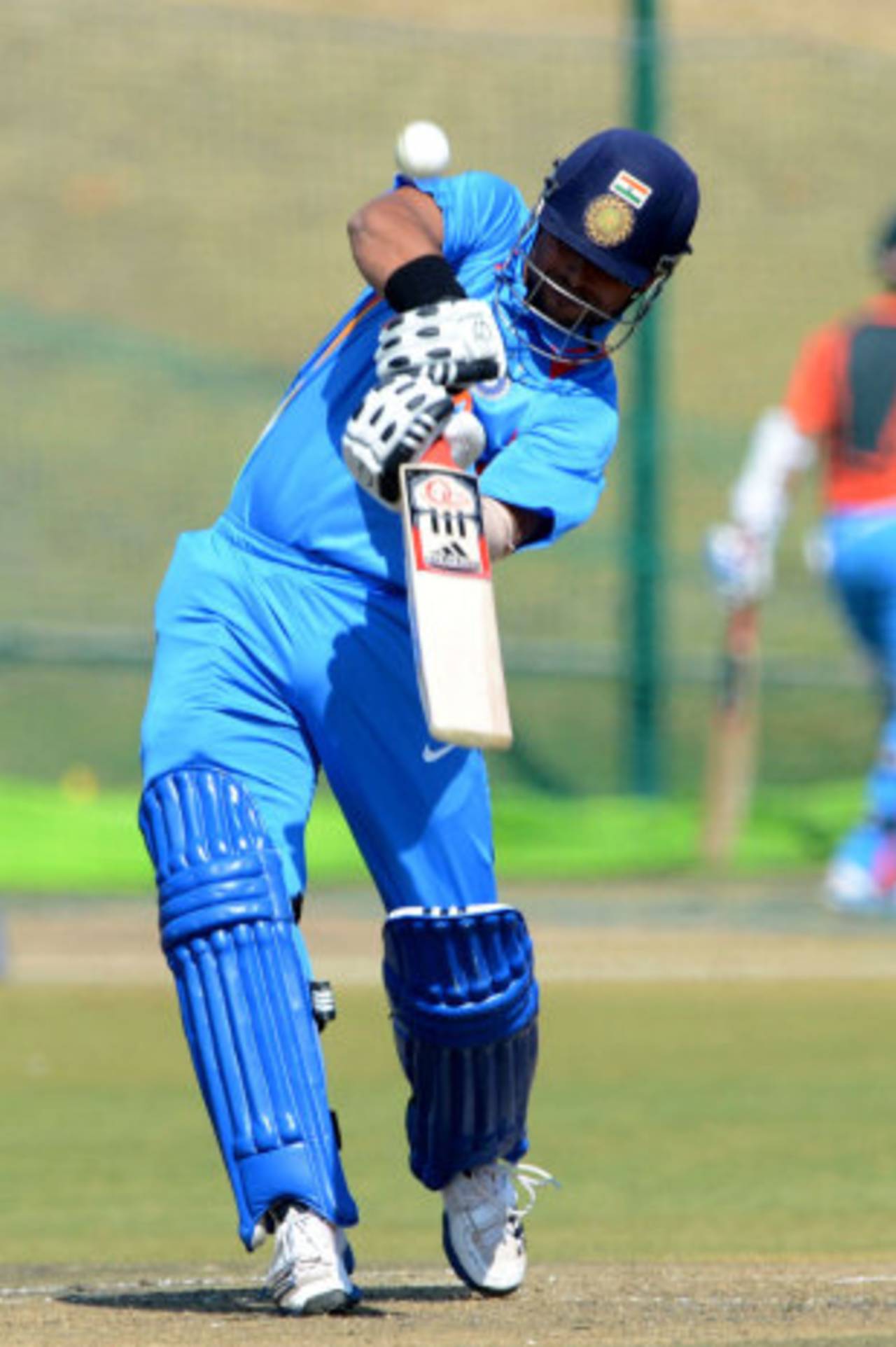As he dissected India's performance after their
heavy defeat to Australia in the first ODI, MS Dhoni also revealed an important development: India are trying to develop
Suresh Raina as a No 4 batsman with an eye on the 2015 World Cup. This was why Raina had been sent in ahead of long-time No 4 Yuvraj Singh in Pune, and he would bat there for a while, according to his captain.
"As of now what we want is for Suresh to bat at No 4 for a considerable period of time," Dhoni said. "It's only Yuvraj Singh who we have got and if he is in good form and we go till the World Cup without anything happening, then he will bat there. But if he doesn't, all of a sudden we can't say we do not have a No 4 batsman.
"All the other slots, we have players and we even have replacements. But apart from Yuvraj, I don't see anybody who has batted 50 ODIs at No 4. That can be a concern and we will have to rectify that from this point. No point going too late and then saying we don't have time to do anything."
Dhoni's rationale in wanting a back-up for a crucial batting position is understandable, especially given Yuvraj's recent history. Yes, he's made his second comeback since recovering from cancer but it is still unclear how his form will hold up as the World Cup approaches. He is obviously the first-choice No 4 but there is every reason to have a contingency plan in place.
So for the second time in his eight-year international career, Raina will get another sustained run up the order. The first opportunity had come in 2008, when over
13 successive innings in Pakistan, Sri Lanka and India, he produced one century and four fifties at an average of nearly 40.
As his career has progressed, Raina's desire to gain a promotion in the line-up has increased. He's seen Virat Kohli come in and establish himself at No 3 with a string of hundreds. Raina knows that for all the death-over slogging, it is the centuries that catch attention and bring lasting recognition. Last year, Raina pointed out that he'd "scored only three (ODI) hundreds", as he staked his claim for elevation again.
While Raina's desire cannot be faulted, mere elevation in the batting order will not result in more hundreds. They will have to be earned by taking on the responsibility of building an innings, something Raina hasn't exactly shown the inclination for when he has been given the chance. Captaincy should ideally translate into more cautious batting, as in Dhoni's case, but
when Raina led India in Zimbabwe in 2010 and in the West Indies in 2011, he refused to change his aggressive approach.
India had sent second-string sides for both tours, and Raina mostly came in with plenty of overs to go after a top-order wobble. In nine innings over those tours, he averaged 23.57, including two not-outs in chases that were almost over by the time he walked in. Three times he failed going for his favourite slog-sweep when the situation demanded restraint.
In Pune, Raina looked to launch James Faulkner over midwicket, after gaining a hard-earned start against Mitchell Johnson's pace, and fell for 39. It was not the ideal response from a No 4 batsman at that point in a tough chase. Raina, however, is used to going for similar strokes to similar deliveries. Aggression comes naturally to him. Also, an overwhelming majority of his career has been spent at No 5 or below. Often, he doesn't have the luxury of getting himself in so these shots are instinctive.
It is not to say Yuvraj would have never gone for the same shot at that moment. But at No 4, a batsman must temper the urge to turn a 10-run over into a 16-run over with an eye on the big picture. Yuvraj has done that successfully for more than a decade. He can hit six sixes in an over in a Twenty20, but he also makes sure he lasts long enough to get the big scores that win ODI games. That necessitates controlling the urge to deposit one more over midwicket. It needs one to duck under a few short balls early on rather than try to work them for singles, one of Raina's preferred ways of handling the bouncer barrage he usually faces. Dhoni knows Raina will need some time to unlearn and adjust.
"We will have to give him some kind of experience at No 4," Dhoni said. "He's batted too long at No 6. That is why sometimes you see these instinctive shots, when the batsman sees and goes after them. It is very important that he uses these opportunities well. Then we'll have two batsmen who have a fair amount of exposure at No 4."
Raina has the chance to increase his centuries from "only three." Will he able to adapt and rein himself in? India will have a clearer picture of his ability by the end of the Australia series.
Abhishek Purohit is a sub-editor at ESPNcricinfo
